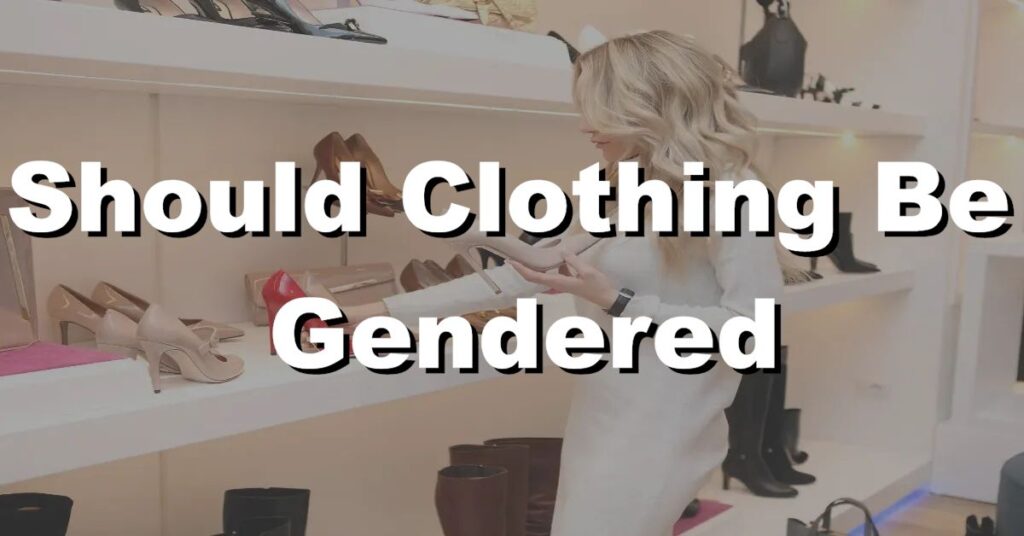Gender-neutral clothing is becoming increasingly popular, but is it necessary to do away with gendered clothing altogether? In this blog post, we’ll explore the debate over gendered clothing and the pros and cons of unisex fashion.
The History of Gendered Clothing and Its Evolution
Gendered clothing has a long and complex history that spans centuries and cultures. In ancient times, clothing was used to distinguish social status, and gender was one factor in that differentiation. However, gendered clothing as we know it today began to emerge during the Renaissance, when clothing styles for men and women began to diverge in more significant ways.
Over time, gendered clothing became more rigidly defined and enforced, with specific styles, colors, and fabrics associated with each gender. This divide has persisted through various fashion movements, from the gender-bending fashions of the 1920s to the hyper-masculine and feminine looks of the 1950s.
However, recent years have seen a shift away from strict gendered clothing and a growing interest in unisex styles that challenge traditional gender norms.
Unisex Clothing: Breaking the Gender Binary in Fashion
Unisex clothing is a growing trend in fashion that seeks to challenge traditional gender norms and offer more inclusive options for people of all genders. Unisex clothing is designed to be versatile, adaptable, and free from gendered stereotypes, with a focus on comfort and functionality.
It often features simple, minimalist designs and neutral colors that can be easily mixed and matched to create a variety of looks. Unisex clothing is an important step towards breaking down the gender binary in fashion and promoting more inclusive attitudes towards gender identity and expression.
The Importance of Inclusive Sizing in Clothing Design
Inclusive sizing is a crucial consideration in clothing design that ensures that people of all body types and sizes can find clothing that fits comfortably and looks great.
Historically, fashion has been geared towards a narrow range of body types, with many designers focusing on creating clothing for slim, conventionally attractive models. This has left many people feeling excluded from the world of fashion and struggling to find clothing that fits them properly. Inclusive sizing seeks to address this issue by creating clothing that is designed to fit a range of body shapes and sizes, with a focus on comfort, style, and accessibility.
By incorporating inclusive sizing into their designs, fashion brands can ensure that their clothing is accessible to a wider range of people and promote a more positive, body-positive image of fashion.
Addressing Cultural Appropriation in Gendered Clothing
Cultural appropriation is a significant issue in fashion, with many designers and brands appropriating traditional clothing styles and motifs from cultures around the world without proper recognition or respect. This can lead to harmful stereotypes, erasure of cultural histories, and the exploitation of marginalized groups.
In the context of gendered clothing, cultural appropriation can be especially damaging, as it often reinforces harmful gender stereotypes and erases the diverse cultural histories of gender identity and expression.
Addressing cultural appropriation in gendered clothing requires a deep understanding of the historical and cultural contexts in which clothing styles emerged, as well as a commitment to ethical and respectful design practices that prioritize cultural sensitivity and inclusivity.
Future Of Gendered Clothing: Trends and Predictions
The future of gendered clothing is likely to be shaped by a growing interest in inclusive and unisex styles that challenge traditional gender norms and promote more diverse and inclusive attitudes towards gender identity and expression.
This may involve a greater focus on gender-neutral fabrics, colors, and designs that can be easily adapted to suit a range of body types and styles. It may also involve a greater emphasis on sustainability and ethical design practices that prioritize the well-being of workers and the environment.
Ultimately, the future of gendered clothing will be shaped by the changing social, political, and cultural attitudes towards gender and the ongoing efforts to create a more inclusive and diverse world.
Conclusion
In conclusion, clothing can be a powerful tool for self-expression and identity. While some people prefer traditional gendered styles, others may prefer to mix and match pieces from different sections of the store. As fashion evolves and society becomes more accepting of diverse gender expressions, we may see a shift towards more gender-neutral clothing.
Ultimately, the choice is yours, and you should wear what makes you feel confident and comfortable.

